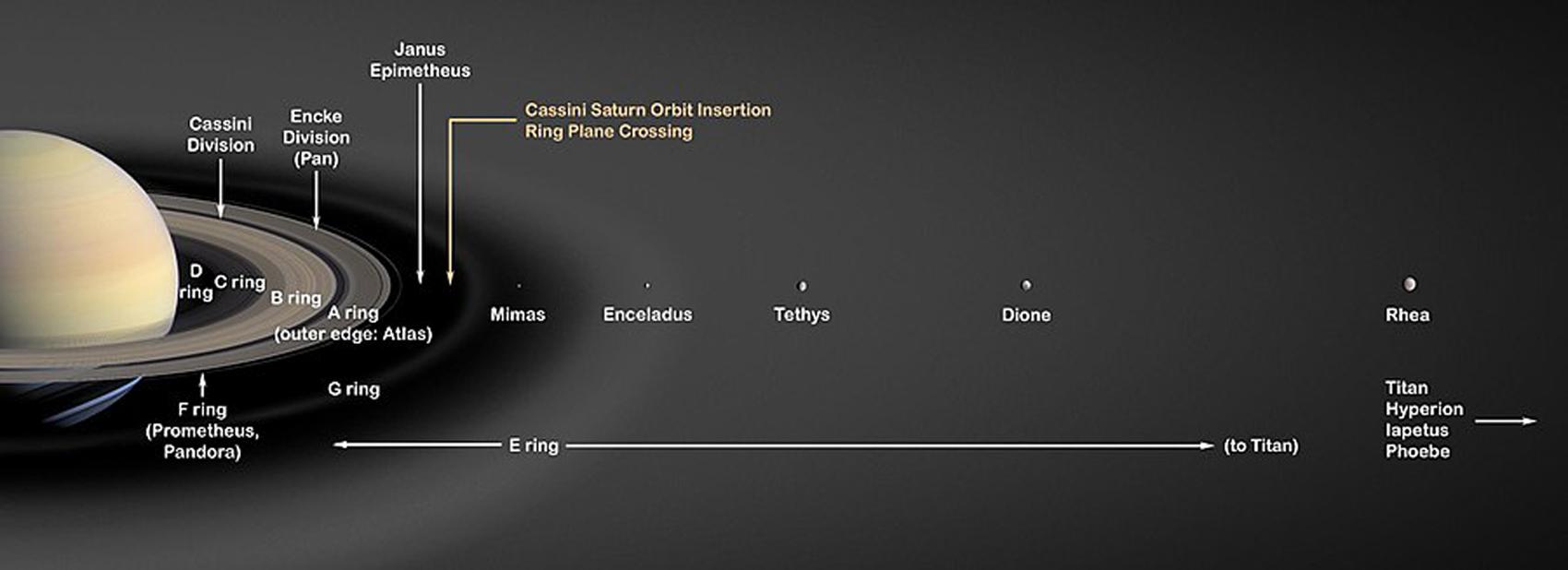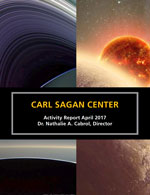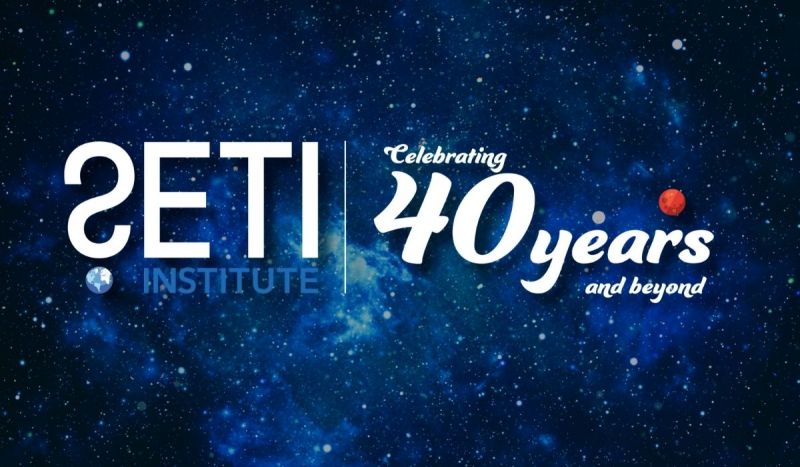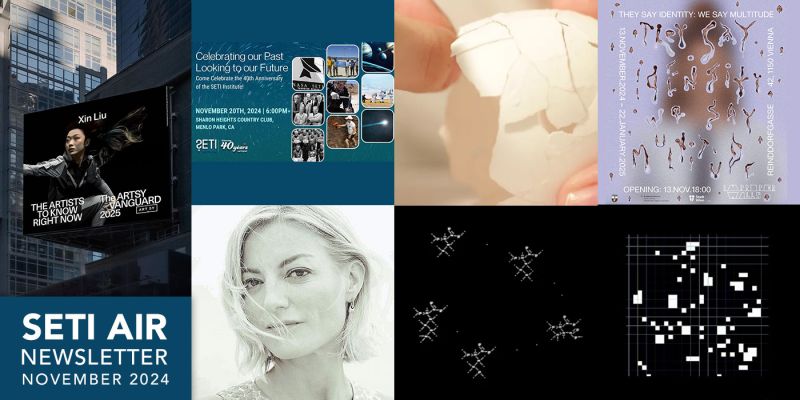
Last year, research from SETI Institute scientist Matija Ćuk, along with Luke Dones and David Nesvorny of the Southwest Research Institute, indicated that Saturn’s moons may be younger than the dinosaurs. Using results from NASA’s Cassini mission to analyze ice geysers on Saturn’s moon Enceladus, they built computer models that indicated that the formation of the major moons of Saturn, with the exception of Titan and Iapetus, dated to the Cretacous period, the era of dinosaurs, and that the moons were likely formed by the collision of an earlier generation of moons.
Now, new research from the Paris Institute of Earth Physics in France has found that while Saturn’s moons could indeed have been formed through collision, that Saturn’s rings are not formed in this manner.
- SETI.org: Moons of Saturn May be Younger than the Dinosaurs
- New Scientist: Saturn’s moons could reassemble after a cosmic smash-up

In 1960 Frank Drake conducted the very first SETI experiments, Project Ozma, at the National Radio Astronomy Observatory in Green Bank, West Virginia, searching for intelligent extraterrestrial life by listening for interstellar radio waves. Since that time, organizations including the SETI Institute, the UC Berkeley SETI Research Center and more have continued the search, and are engaged is developing and utilizing new tools and methodologies. From improved technologies for radio astronomy, to new optical SETI instruments in development, to accessing machine learning computing tools from IBM, the SETI Institute, and others, are breaking new ground in SETI research.

Technologically advanced telescopes are now capable of generating such vast amounts of data, many terabytes, that it is impossible to analyze and understand new information without using refined computing algorithms to process that data in ways that can be replicated and verified. As a result, there’s increased pressure on astronomers and other scientists to go beyond understanding their field of research to write computer programs and find ways to collaborate with data scientists. As a result, there are a number of workshops, programs and fellowships coming into being to address the situation. Among them is NASA’s Frontier Development Lab (FDL), hosted by the SETI Institute, which brings planetary and data scientists together with resources from the private sector to address research gaps for planetary defense, space weather and space resources.
- SETI.org: Machine Learning, Planetary Defense and More
- Wired: For Modern Astronomers, It’s Learn to Code or Get Left Behind

On Tuesday June 6, at 9PM ET/PT the Science Channel will premier ‘Space’s Deepest Secrets: Strange Signals from Alien Worlds.’ The episode will explore the question, “Are we alone?”, including the origin of so-called Fast Radio Bursts which are thus far, unexplained. Among the experts interviewed in this special broadcast are the SETI Institute’s Frank Drake, a pioneer in SETI research, creator of the Drake Equation, and first President of the SETI Institute’s Board of Trustees.
- Space.com: Strange Signals from Space: ‘Space’s Deepest Secrets’ Investigates
- Broadway World: Science Channel to Present Space’s Deepest Secrets: Strange Signals from Alien World, 6/6

On May 18, KIC 8462852, also known as Tabby’s Star, began to dim again, prompting global interest and speculation. Tabby’s Star is exceptional because it sometimes dims by 20%, but we don’t know why, with some wondering whether the dimming is caused by some sort of “alien megastructure.” The SETI Institute monitored the star with the Allen Telescope Array (ATA), but thus far, observations have not yielded any answers.
- SETI.org: What’s Up with Tabby’s Star?
- MF Monitor: Alien Megastructure’s Flip-Flop Brightness Intrigues Space Researchers
- Blasting News: Astronomers scramble to observe strange dimming of KIC 8462852
- Astronomy Now: The Galaxy’s Strangest Star Dims Again
- CNET: New data is in on mystery star's recent weirdness
- India.com: Tabby’s Star Observed to be Dimming! Astronomers Shocked as Mysterious Star in the Universe is Acting Up Again
- NZ Herald: 'This is not a drill': Scientists scramble to observe mysterious Tabby's Star
- Tech 2: Watch as astronomers around the world co-ordinate to observe the most mysterious star in the universe

‘Aliens,’ by Jim Al-Khalili, features contributions from SETI Institute scientist Nathalie Cabrol, Director of the Carl Sagan Center and from SETI Institute Senior Astronomer Seth Shostak, among others, providing their perspectives on the possibility of life beyond Earth..

Last week, Science Breaking Bad, featured discussions about the scientific method and how to think about news presented as scientific breakthrough. This week, The Crater Good is an encore presentation that suggests Earth may be headed toward land masses converging into one massive supercontinent, and also explores earthquakes and earthquake clusters both on Earth and beyond..

Last week’s Facebook Live event was from Namibia where SETI Institute President and CEO Bill Diamond has been traveling and investigating astronomical wonders, as well as in South Africa. All Facebook Live videos can be viewed on the SETI Institute Facebook page here.

Senior Astronomer and host of Big Picture Science Seth Shostak offered his review of Alien: Covenant, which may be a gripping film, but perhaps not scientifically accurate.
Seth can also be heard on StarTalk in Extended Classic: UFOs and Possible Aliens with Seth Shostak.
- Osher Lifelong Learning Institute: June 1, 2017, Santa Clara, CA Edna DeVore, Director of the Education at the SETI Institute will help people get prepared for this summer’s total eclipse of the sun which will take place on August 21, 2017.
- Spacefest: June 8-11, 2017, Tucson, AZ. An annual event that brings the space community together. Pascal Lee and Seth Shostak of SETI Institute will be speaking.
- Machine Learning 4 SETI Hackathon, June 10-11, San Francisco, CA The SETI Institute invites all citizen data scientists and technologists to join us as collaborators in our mission to find radio signals from intelligence beyond our solar system.
- Dynamical Astronomy Meeting of the American Astronomical Society: June 11-15, London, UK SETI Institute Scientist Matija Ćuk will chair a session on Planetary Formation and System Architecture.
- Smithsonian Magazine Future Con, June 16-18, Washington D.C. Bringing science fiction and fantasy together with serious science and cutting-edge technology. Seth Shostak with be a speaker.
- Starmus Festival IV, June 18-23, 2017, Trondheim, Norway A celebration of science and the arts. Presenters will include Jill Tarter, Bernard M. Oliver Chair for SETI at the SETI Institute and Nathalie Cabrol, Director of the Carl Sagan Center for Research at the SETI Institute
- Kepler & K2 SciCon IV: June 19-23, Moffett Field, CA SETI Institute scientists including Jeffrey Coughlin will participate.
- SETI Talks: July 12, Palo Alto, CA SETI Talks return featuring Jill Tarter, Sarah Scoles, Eliot Gillum, and more.
- Virtual Reality in Space: The Next Big Thing: July 12, San Francisco, CA Franck Marchis will participate in a discussion about ways in which virtual reality might play a role in space exploration.
- Starship Congress 2017, August 7-9, Monterey, CA. A conference that explores pathways to allow human exploration of the galaxy. Franck Marchis will give a presentation.

It’s time again for a more comprehensive review of the work that has been going on at the SETI Institute. The complete Carl Sagan Center Activity Report for April 2017 can be downloaded here.





